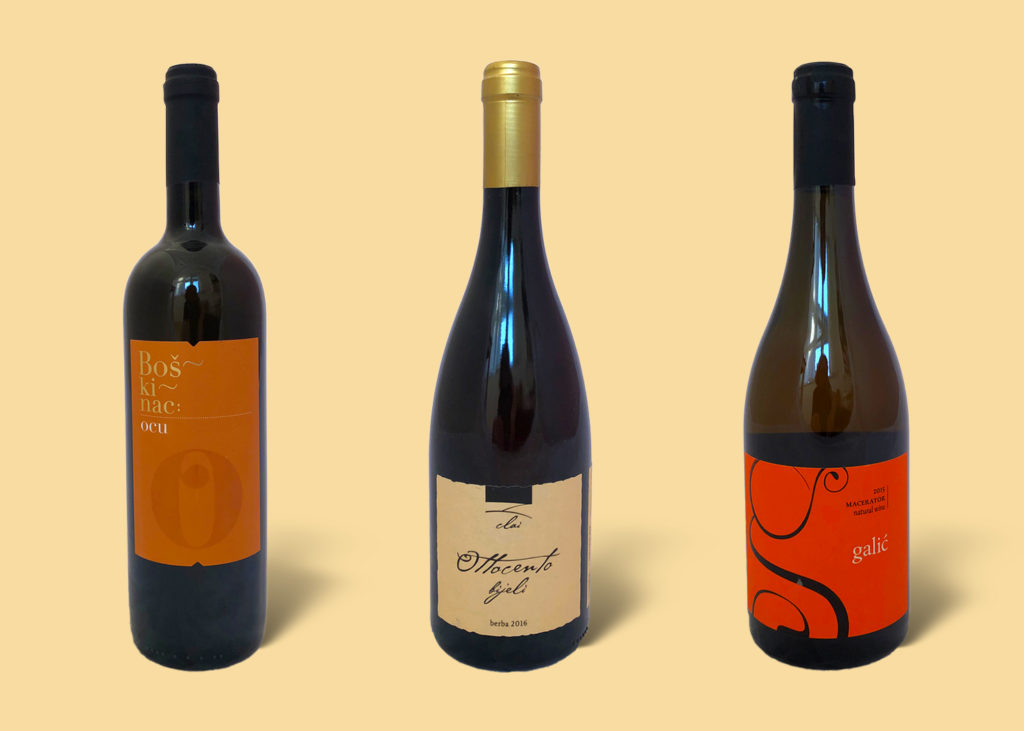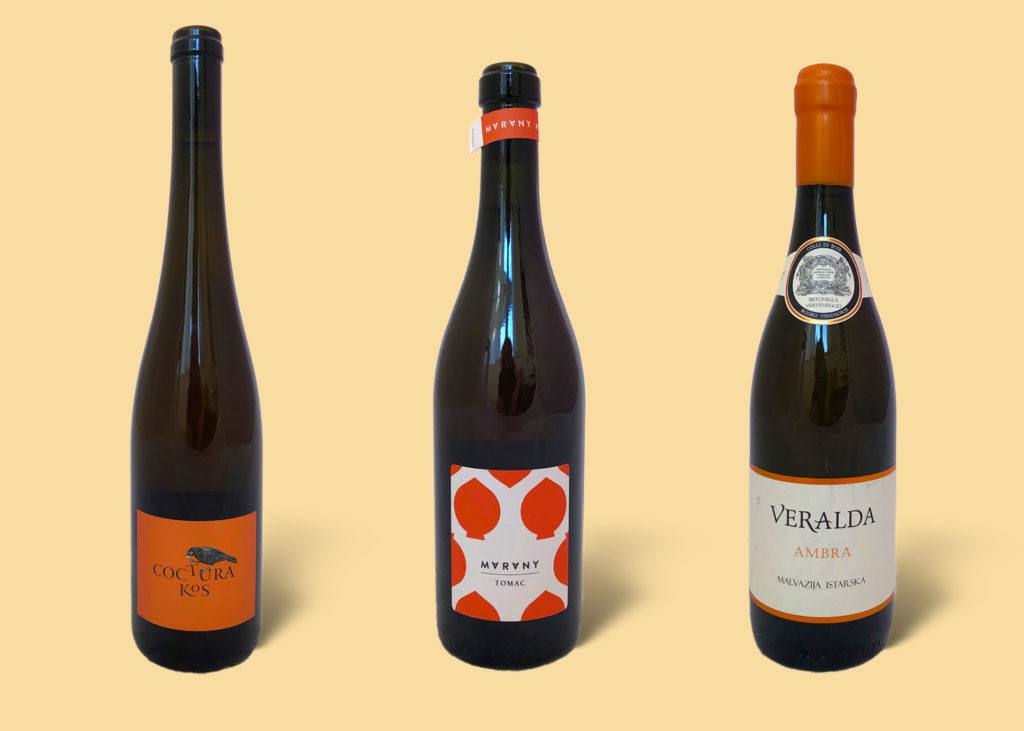Orange or amber wine is made from white grapes in the same way that red wine is made from black grapes, by soaking the juice and the skins together. The skins give orange wine its distinctive color and punched-up flavor, versus white wine, where the skins are removed from the juice before fermentation. Read more about orange wine here.
Orange wines are both very old and fairly new. The old-style “technology” used to make orange wine goes back thousands of years. White wines used to be made this way. But overall, orange wine has not been available until recently. This is largely due to trends in winemaking. With the advent of modern winemaking technology after World War II, purity and “cleanliness” became the goal, and many wine makers strove to make fresh, crisp, clinically “perfect” white wines.
In the past two or three decades, however, the pendulum has swung away from clinical whites, and toward wines that speak of nature, that have character and texture, and better express the flavors of grape and place. Orange wine falls along this reach of the pendulum.
The biggest question on most people’s minds is How do you drink it? If red is for meat and white is for fish (and that’s a big if) then what is orange for?
The answer is that orange is in between, a bit like rosé. Summery rosé is great for refreshing sipping and pairs well with just about everything—from grilled meats to pork to vegetarian, from tomato dishes to seafood. The problem is, most people wouldn’t dream of drinking rosé in the winter. The solution is to think of orange wine as winter rosé. If you like the spicy, autumnal flavors of orange wine, and its light dose of tannin, try it with fall and winter foods.
The style of these wines depends on the grape used and the wine maker’s philosophy—there are lighter, smoother versions and intensely rich wines with the flavors of a single-malt whisky. Here are six bottles from all over Croatia to get you started.
The Tasting
Note: This tasting is meant to be readable, not comprehensive. We tasted six wines, not 60. The wines are listed in alphabetical order by producer. A star (*) indicates wines that stood out for their quality and flavor on the day of the tasting. Prices are those at the winery or winery webshop.

Boškinac Ocu 2018 (Pag) 240 kn
A cuvée based on the hyper-local Gegić grape of Pag island, this is one of the subtler options among these six bold wines. It has a fresh, delicate aroma of winter squash. The oxygen contact during winemaking shows in flavors of peeled apple—one taster described it as Somerset cider. The finish is rewarding, too, with almond and orange notes that linger long after swallowing. An elegant, almost-full-bodied wine.
Clai Ottocento Bijelo 2016 (Istria) 174 kn
This pretty, amber-orange wine is made from Malvazija, Sauvignon Blanc and Pinot Sivi (Pinot Grigio). It has “darker,” cozier flavors, as opposed to the flashy floral or citrus notes of some of the other wines here. Look for aromas of baked apples and caramel, a full body, and caramel and malt flavors with a touch of persimmon, blood orange and strawberry-flavored hard candy. Incredibly rich but totally dry. Biodynamic.
Galić Macerator 2015 (Slavonia) 175 kn
If you think you know what orange wines taste like, get ready to have your mind blown. This 100% Riesling is one of the brightest, lightest, most floral-scented macerated wines we’ve tasted—totally in line with Galić’s modern style of winemaking. This is super lively on the palate, with ethereal floral notes, tart cider apples, green mango, lime juice, a touch of nuttiness from oxygen contact, and a lasting apple-lime finish. Vibrant and gorgeous.

Kos Coctura 2016 (Prigorje-Bilogora) 200 kn
After macerating for a full six months, this Riesling has the autumnal flavors you expect (baked fruit, pumpkin pie with clove) but also an intriguing top note of cinnamon candy. Lastly, a touch of smoke that reminded one guest taster of Japanese whiskey. If you prefer a lighter wine, note that this Riesling and the one above (Galić) are light bodied; all the other wines in this tasting are pretty big and full.
*Tomac Marany 2019 (Plešivica) 145 kn
This wine looks like a cloudy amber beer—and smells like something you’d want to dab behind your ears. Insanely floral aromas, plus citrus, like grapefruit or buddha’s hand citron, which change after a few minutes to something a little darker, like oxidized apple and quince. On tasting, it is full bodied and intensely aromatic, with almost a spicy hops character. Guest tasters declared this the “beeriest.” Made from a blend of old Plešivica grape varieties. Biodynamic.
*Veralda Ambra 2017 (Istria) 110 kn
Made from Malvazija Istarska, this is more golden than orange in color, and smells exactly like baked butternut squash with brown sugar and butter. Overall, it strikes a beautiful balance between cozy flavors like caramel and baked apple, and bright notes like Key lime. There’s also a fascinating vegetal note, like raw squash. It comes so close to dessert, without a hint of sweetness! Rich and full bodied at 14% alcohol. Organic.
Cheers Croatia Magazine conducts wine tastings in the semi-blind format. This means that we know what wines we have, but they are placed in numbered bags so we can’t identify them during the tasting. Wines for tastings are purchased, or occasionally donated by the winery. See the magazine’s Affiliations and Gifts Policy for more information.

